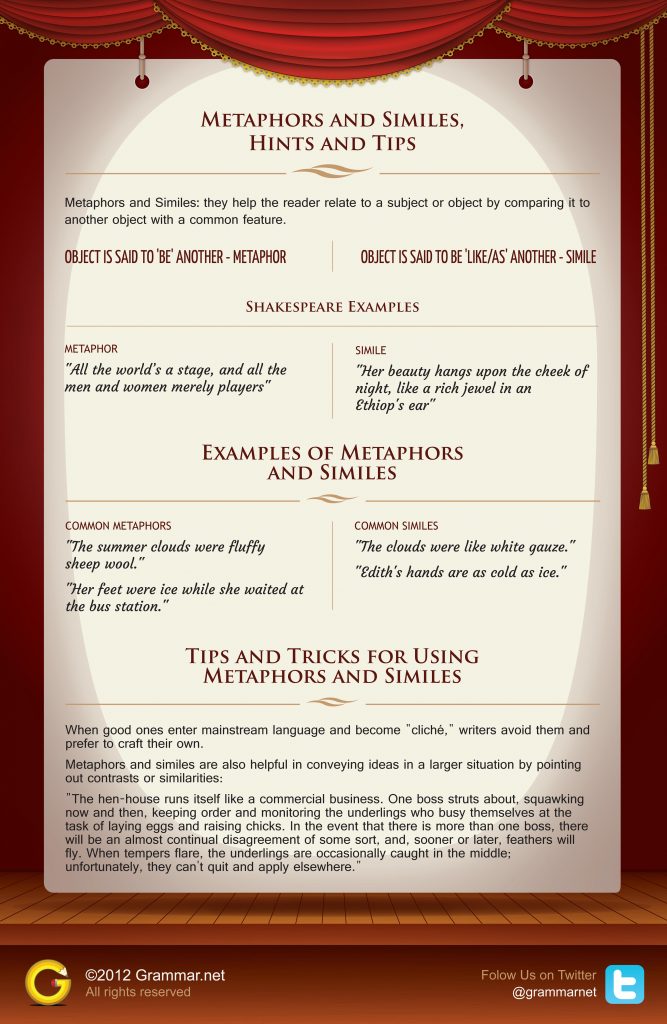Metaphors and similes Posted by Gabriele on May 13, 2014 in English Language
Check out this overview of metaphors and similes by Grammar.net.
Learning to use metaphors and similes is a great way to make your written and spoken language more interesting, but first you have to know what these are and what the difference is between the two.
First you should know; a simile is a metaphor, but not all metaphors are similes.
A metaphor is something that we call “a figure of speech” in English. When using a metaphor you are transferring the sense, aspects, or ideas of one word to another word. For example let’s look at the metaphor from Shakespeare highlighted by Grammer.net.
“The world’s a stage, and the men and women are merely actors.”
In this metaphor the world is compared to a theater stage, life is considered to be a play, and all men and women are actors acting through their lives.
A simile is a type of metaphor in which a comparison is made using the word like (or a similar word). For example let’s look at the common simile cited above:
“Edith’s hands are as cold as ice.”
This simile conveys the idea that Edith has hands that have the same attributes as ice: they are very cold.
Metaphors and similes are used to make language more interesting and colorful. You probably use these all the time without thinking about it in your native language, and maybe you use them some in English too. I would like to challenge you to try and use more metaphors and similes on purpose when speaking and writing English from now on.
Here are two simple examples of how you can use similes when talking about learning English:
My English teacher is as ____________________ as _________________________ .
Example: My teacher is as refreshing as a summer breeze.
Learning English is like ________________________.
Example: Learning English is like building a house, first you build the foundation then you build the frame, and finally you add the details.
Can you think of any metaphors or similes about learning English?

Build vocabulary, practice pronunciation, and more with Transparent Language Online. Available anytime, anywhere, on any device.
About the Author: Gabriele
Hi there! I am one of Transparent Language's ESL bloggers. I am a 32-year-old native English speaker who was born and raised in the United States. I am living in Washington, DC now, but I have lived all over the US and also spent many years living and working abroad. I started teaching English as a second language in 2005 after completing a Master's in Applied Linguists and a Certificate in English Language Teaching to Adults' (CELTA). Since that time I have taught ESL in the United States at the community college and university level. I have also gone on to pursue my doctorate in psychology and now I also teach courses in psychology. I like to stay connected to ESL learners around the world through Transparent Languages ESL Blog. Please ask questions and leave comments on the blog and I will be sure to answer them.





Comments:
facebook emoticons:
Nice!!